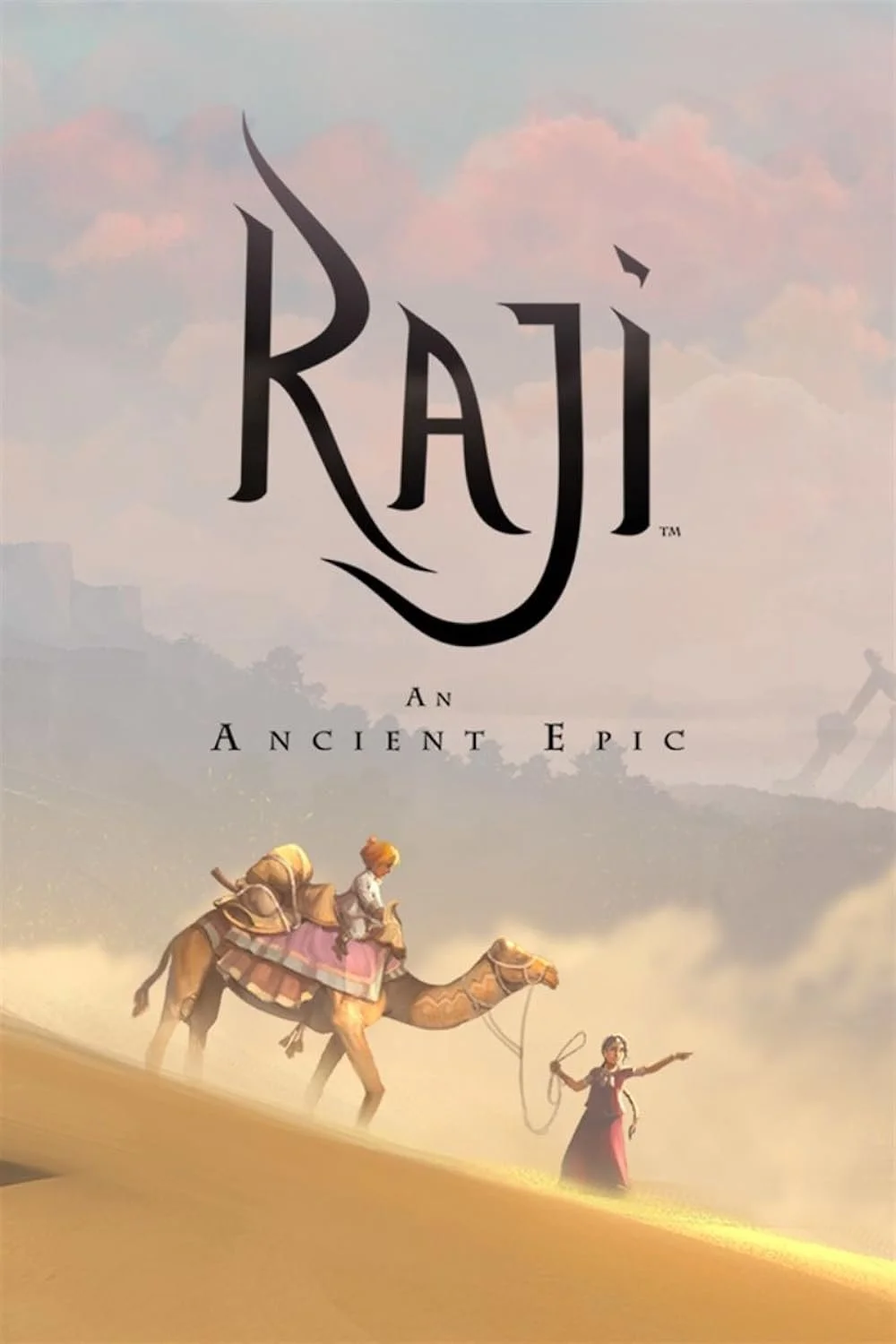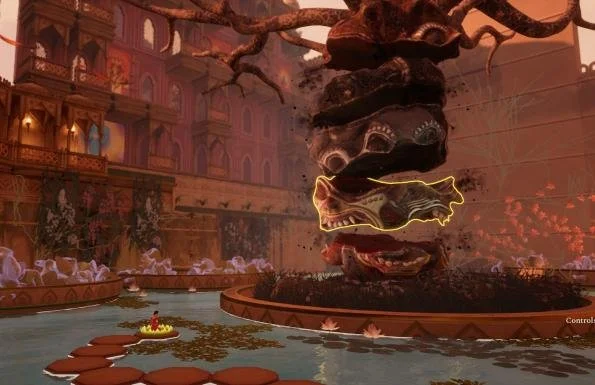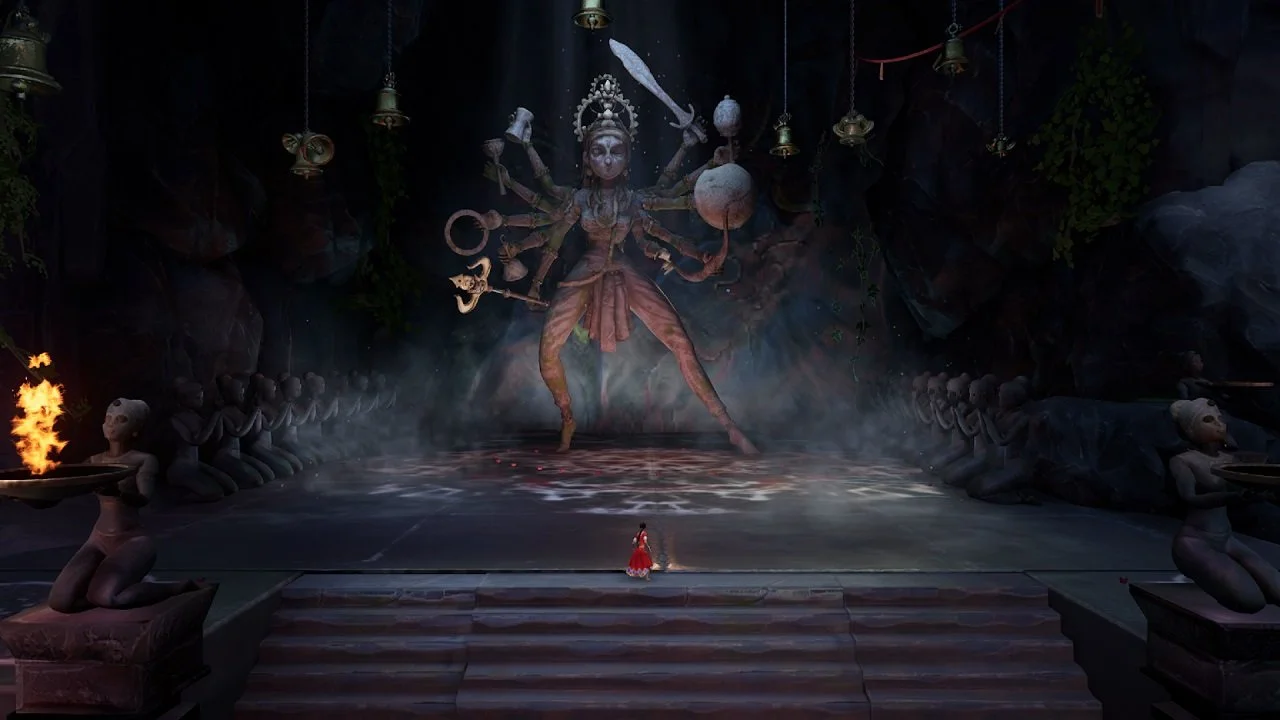
Thesis Exhibition, 2022
At SMU Guildhall, all production students are required to complete a master’s thesis before graduating.
My thesis was focused on how video games can pique students’ interest in different cultures and encourage them to learn more outside of play. This page provides a brief overview of my research—much information has been cut for the sake of brevity.
For those interested in reading my research in full, or production students at Guildhall wanting a reference for what my thesis materials looked like, my proposal, full paper, and defense presentation can be found here.
Any Guildhall students seeking help or feedback can reach me at [email protected] or through my contact form.
Do Learning Style, Openness to Diversity, and Engagement with an Action-Adventure Game Impact a Player’s Decision to Learn More about a Game’s Cultural Setting(s)?
Summary
Introduction
The serious games category has emerged as an avenue for teaching players about a variety of subjects, including different cultures. Studies have found that digital games are an effective method for sharing “immaterial heritage” (which describes intangible ideas like social values, artistic expression, folklore, and more) to players immersed in a game. Immaterial heritage is portrayed through a combination of cultural awareness, historical reconstruction, and heritage awareness—elements which are necessary for establishing an immersive atmosphere in any game’s setting, historical or otherwise.
I created a quasi-experimental study based around the action adventure game Raji: An Ancient Epic, which successfully shares the immaterial heritage of Hindu and Indian cultures, to learn if playing it would encourage gamers to interact more with those cultures outside of gameplay.
My research questions were:
Does engagement in a video game lead players to pursue post-gameplay actions to learn more about the cultural setting(s) of the game?
Are players who are open to diversity more interested in pursuing post-gameplay actions to learn more about the cultural setting(s) of the game?
Does learning style impact participants’ interest in pursuing post-gameplay actions to learn more about the cultural setting(s) of the game?
Hypotheses
Hypothesis 1: Engagement (Accepted)
Players who report high levels of engagement in the game will take post-gameplay action to learn about the game’s cultural setting(s).
My first hypothesis was that players who enjoy the game more would go beyond Raji: An Ancient Epic to learn about the game’s cultural setting(s). This was based on studies showing that playing games can increase a player’s short-term interest in a subject and lead to developing a personal interest over time—findings which were consistent with my own.
One reason why video games encourage players to engage with their subject matter outside of play is because the players emotionally bond to the characters. Players tend to enjoy games with rich narratives and strong characters, especially if they feel good about identifying with the protagonist. Additionally, players enjoy that identification more if the character’s role appeals to them and if they can succeed in carrying out that character’s actions. Likely, enjoying the game helped the players in my study feel personally involved in the game’s narrative. That emotional investment fostered further interest in the protagonist’s culture, leading to them engaging more with Indian cultures outside of Raji: An Ancient Epic.
Hypothesis 2: Openness to Diversity (Accepted)
Players with high openness to diversity will take post-gameplay action to learn about the game’s cultural setting(s).
My second hypothesis was that players who are open to experiences with people or cultures different to their own will interact more with Indian cultures after playing Raji: An Ancient Epic. This was based on research proving that people who are open to diversity seek out these experiences more often. Here, again, my results were consistent with previous studies, and extends their findings that increasing exposure to diversity leads individuals to pursue further interactions with different kinds of people and cultures.
Research has shown that people who have achieved higher levels of education tend to be more open to diversity. Since my sample pool was made up primarily of graduate students, it’s unsurprising that they fit this pattern. This connection between education and openness to diversity might be due to the fact that people who are interested in continuing their education are already engaging in self-expanding behaviors—learning new skills or trying new things—and are more willing to seek out different social groups. Additionally, their social groups support self-expansion, meaning they feel supported by the people in their life to continue pursuing experiences outside of their comfort zones.
Hypothesis 3: Learning Style (Rejected)
Players with an active experimentation learning style preference will take post-gameplay action to learn more about a game’s cultural setting(s).
My third hypothesis was that players with an active learning style preference will take post-gameplay action to learn more about a game’s cultural setting(s). This was based on studies that people with an active learning style may prefer learning by doing—including learning by playing video games—and are more satisfied with training methods that feature interactivity.
However, this hypothesis was rejected, with several likely explanations: the experiment’s sample had a bias, the participants’ interest in the subject matter was not internalized or triggered enough, and the game did not match the players’ learning goals (if they had any). From these findings, it’s possible to conclude that learning style alone is not enough to predict whether a player will pursue post-gameplay action to learn more about a game’s cultural setting(s), but should be studied alongside opportunities to evoke and sustain player interest, such as personal motivation or playing socially.
Conclusions
My research found that the action-adventure genre was well-suited for passing immaterial culture to players. To increase player engagement in an action adventure game, developers can focus on:
Focus on developing a strong emotional bond with the protagonist
Create additional NPCs for players to form relationships to within the game
Create culturally inspired character designs to integrate the cultural background into characters’ costume, mannerisms, etc.
Build a balanced set of game mechanics that are fun
Use cultural elements in the game’s setting/mechanics
Serious game developers should consider their target audience when creating their game. If they target an audience that is already open to diverse experiences, they can rely on that audience to already have high levels of self-expansion & won’t have to focus on cultivating it in them. If they target a younger or less educated audience, developers will need to consider what design decisions they’ll need to incorporate into the game to increase the lower levels of self-expansion in these players to the point where the players will feel comfortable engaging with a culture different to theirs.
Researchers interested in the impact of learning style on a player’s motivation to pursue post-gameplay actions should examine additional factors to developing situational and individual interest in a topic, such as number of exposures to the topic, personal motivation, and time spent interacting with the topic. Using video games for education is a topic worth exploring further, from both a research and a developer perspective.





